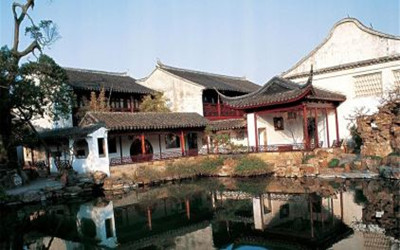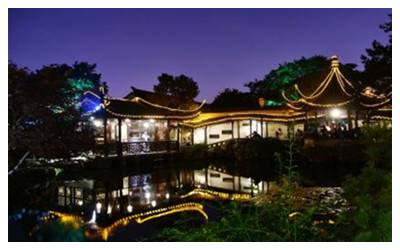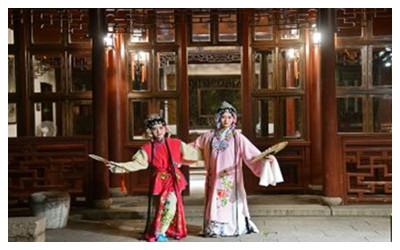Skype: neodalle-travel
Tel: +86 135 7447 2266
E-mail: sales@zhangjiajieholiday.com
 The Master of Nets Garden was first designed during the Southern Song Dynasty (1127-1279) as a residence for a government official. At that time, the garden was named "the Hall of Ten Thousand Books" because the owner housed numerous books in three studies within the garden. Later on, it went through vicissitudes in different dynasties until an official named Song Zongyuan bought and restored the garden around 1765 in the Qing Dynasty (1644 - 1911). It is said that in a moment of frustration with bureaucracy he declared that he would rather be a fisherman than a bureaucrat. Therefore, he changed the name of this garden to "Wangshi Yuan", meaning a fisher’s garden in English, to express his will.
The Master of Nets Garden was first designed during the Southern Song Dynasty (1127-1279) as a residence for a government official. At that time, the garden was named "the Hall of Ten Thousand Books" because the owner housed numerous books in three studies within the garden. Later on, it went through vicissitudes in different dynasties until an official named Song Zongyuan bought and restored the garden around 1765 in the Qing Dynasty (1644 - 1911). It is said that in a moment of frustration with bureaucracy he declared that he would rather be a fisherman than a bureaucrat. Therefore, he changed the name of this garden to "Wangshi Yuan", meaning a fisher’s garden in English, to express his will. Walking around the gardens and along the walkways, you can often see beautiful flowers or plants through delicate windows which frames the scenery from a distance and draw you to a single sight, a moment of peaceful natural beauty. As you walk through the buildings, it is easy to imagine the life that the original residents lived in a feudal society where these gardens were solely for their pleasure and the pleasure of their guests. The various buildings are constructed so that you can always access the main garden from any room.The rooms themselves are quite impressive in design and ornamentation and well represent the style of the Song Dynasty.
Walking around the gardens and along the walkways, you can often see beautiful flowers or plants through delicate windows which frames the scenery from a distance and draw you to a single sight, a moment of peaceful natural beauty. As you walk through the buildings, it is easy to imagine the life that the original residents lived in a feudal society where these gardens were solely for their pleasure and the pleasure of their guests. The various buildings are constructed so that you can always access the main garden from any room.The rooms themselves are quite impressive in design and ornamentation and well represent the style of the Song Dynasty. inner garden of Dian Chun Yi which is only about 660 square feet, has the distinction of being used as the model for the Ming Hall Garden at the Metropolitan Museum of Art in New York City and also completely miniaturized for an exhibit in the Pompidou Center in Paris in 1982. This garden is reputed to be the most well-preserved one in Suzhou and should not be missed. It is small in size, but is like a beautifully cut diamond whose beauty is of everlasting fascination and pleasure.
inner garden of Dian Chun Yi which is only about 660 square feet, has the distinction of being used as the model for the Ming Hall Garden at the Metropolitan Museum of Art in New York City and also completely miniaturized for an exhibit in the Pompidou Center in Paris in 1982. This garden is reputed to be the most well-preserved one in Suzhou and should not be missed. It is small in size, but is like a beautifully cut diamond whose beauty is of everlasting fascination and pleasure.Travel Tips
Add: Suzhou City, Jiangsu Province
Admission Fee: CNY 40
Opening Hours:08:00-17:30
 Ask Questions ?
Ask Questions ?